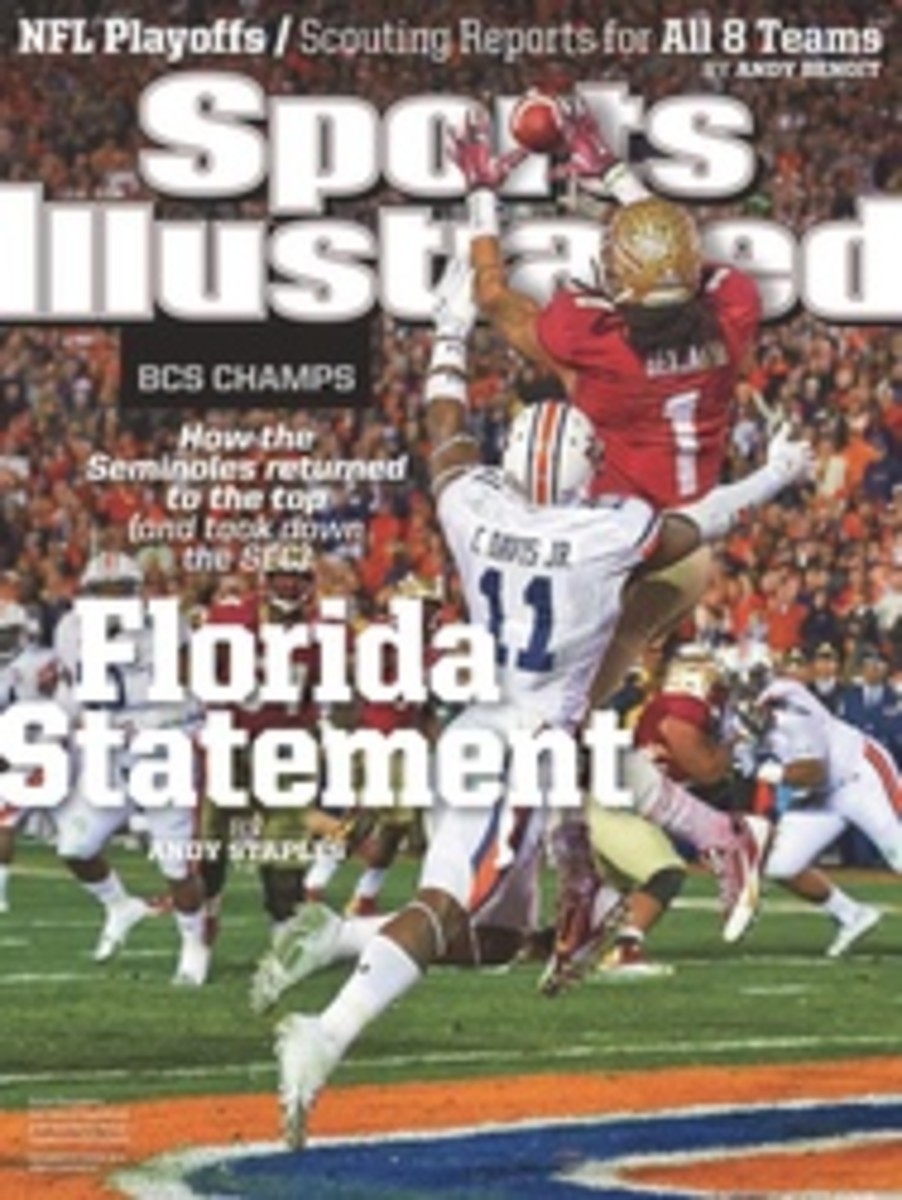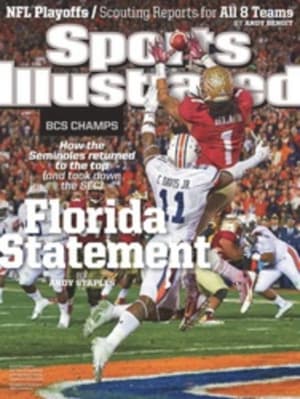
THE CASE FOR THE... Broncos
There's a perception that Peyton Manning's work at the line of scrimmage is complicated. After all, the only way that a 37-year-old who has experienced four neck surgeries and a gradual, unnegotiable decline in arm strength could break the NFL's single-season records for yards and touchdown passes is by being some sort of quarterbacking genius. Right? But most geniuses—especially those who lead others—prosper not by deconstructing intricate complexities but by exploiting unrecognized simplicities.
Football strategists like to say that geometry doesn't have bad days. No player appreciates this as deeply as Manning. In many of his pre-snap gyrations he is not sorting through what the defense might do; he's looking for those things that geometry guarantees a defense can't do. He's identifying angular and spatial relationships among defenders, field markings and his offense's alignment. From this, Manning can accurately anticipate the defense's response. This is much more effective than trying to read an entire D after the snap, which explains how Manning consistently gets the ball out before his line—which thrived despite its lack of athleticism and the absence of stud left tackle Ryan Clady—breaks down.
The stiller the pre-snap picture, the easier it is for Manning to ID and anticipate geometric keys. This is one reason why he rarely sends players in motion. He does, however, reposition them slightly before the snap. That's a great way to adjust a play's geometry without changing its structure, allowing Manning to pick up on subtle defensive cues. It also keeps things simple for teammates; their assignments are tweaked but they don't have to reprocess whole new ones.
Take out slot receiver Wes Welker's option routes, and Denver's offense is one of the least complex in the NFL. Its potency comes from razor-sharp execution and adjustments. Since Manning—with 16 years' experience—is no longer diagnosing defenses after the snap, just confirming them, he's able to dedicate more of his postsnap process to applying geometric reasoning to offset the coverage rotations and disguises that foes sometimes fooled him with in the early and mid-2000s. This enables the Broncos to build wrinkles into their basic route concepts, which they do especially well late in games, after repeated looks at an opponent's coverages.
Those route concepts expanded in 2013 with Welker's arrival and with the continued development of veterans Demaryius Thomas and Eric Decker. It's no surprise that the two incumbent wideouts became precise route runners once Manning arrived. It's also no coincidence that tight end Julius Thomas—a very raw fourth-round pick in '11—had 788 yards and 12 TDs in his first season as a starter. This threat of the downfield pass with myriad weapons compels defenses to keep two safeties deep and creates a less cluttered box for running backs Knowshon Moreno (page 48) and Montee Ball to exploit. It also prevents teams from bringing more exotic pass rushes. Spotting favorable geometry then becomes even easier for Manning, especially within 10 yards of the line, which is the area that most of Denver's passing game attacks.
Taken together, it's a vicious offensive cycle that opponents can only hope to break with favorable field position, big defensive plays and, perhaps, a little help from Jack Frost.
Broncosvs.Chargers
Sunday 4:40 p.m. EST
PHOTO
JOHN W. MCDONOUGH/SPORTS ILLUSTRATED (MANNING)
PHOTO
SCOTT CUNNINGHAM/GETTY IMAGES (KNIGHTON)
PHOTO
ILLUSTRATION
On Second Thought
Even before All-Pro outside linebacker Von Miller tore his ACL in Week 16, there were already cracks in the Denver defense despite its sturdy rotation of run-defending linemen and proven man-coverage DBs. Injuries and underachieving performances prompted coach John Fox and defensive coordinator Jack Del Rio to experiment with new personnel at inside linebacker, defensive tackle, strong safety, free safety and cornerback. That would be an alarming shakeup heading into September, let alone January. Now the Broncos are without Miller, the one pass rusher capable of masking those deficiencies.
Matchup X-Factor
Denver's interior D-line is stingy, but it became more generous late in the year. In a 27--20 loss to the Chargers in Week 15, only 16 of 41 carries by San Diego RBs netted four or more yards, which is low—but only four carries lost yardage, also low. And Philip Rivers was hit only twice. The DTs (including Terrance Knighton) must make more splash plays.

